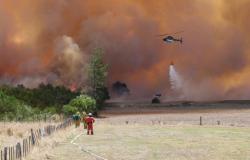Bill Cooke, who leads the Meteoroid Environment Office at NASA’s Marshall Space Flight Center in Huntsville, Alabama, explained the phenomenon in an interview with Fox News Digital. “Unfortunately, we don’t know the timing of this as well as we know the eclipse,” he said. “But when it happens, it’ll be something you’ll remember.”
The star involved in this explosion, T Coronae Borealis, also known as “the blaze star,” is among the 10 known recurrent novas in our galaxy. It is unique in that it erupts approximately every 79 years, with the last explosion observed in 1946.
Explaining the mechanics of the explosion, Cooke said, “A typical nova consists of a star, like a red giant—a star bigger than the sun—and a white dwarf, which is a star about the size of the Earth. And that red giant is dumping material on the surface of that white dwarf. They’re orbiting each other, and they’re real close together.”
“When enough material is dumped on the surface of the white dwarf, the temperature gets so hot that it starts a thermonuclear runway on the surface of that white dwarf,” he continued. “When that happens, that white dwarf blows all that material out into space, and it gets very bright, hundreds of times brighter than what it was before.”
The explosion will be visible just to the right of the constellation Hercules, and it will significantly increase in brightness, reaching about magnitude +2. “It’s about as bright as Polaris, the North Star,” Cooke added.
This celestial event is significant not only because of its rarity but also because of its historical context. “At the time that star blew up, 3,000 years ago, the Bronze Age was ending,” said Cooke. “You had the rise of the kingdom of David in Palestine. You had all this stuff going on, but that’s how to make it back in time that explosion occurred—3,000 years.”
Expand
Cooke encourages everyone to watch for news of the explosion and to view it as soon as possible once it occurs. “Bear in mind, you’re only going to have a few days to see it,” he advised, emphasizing the fleeting nature of this spectacular event.
Tags: NASA Rare nova explosion year onceinalifetime viewing opportunity





